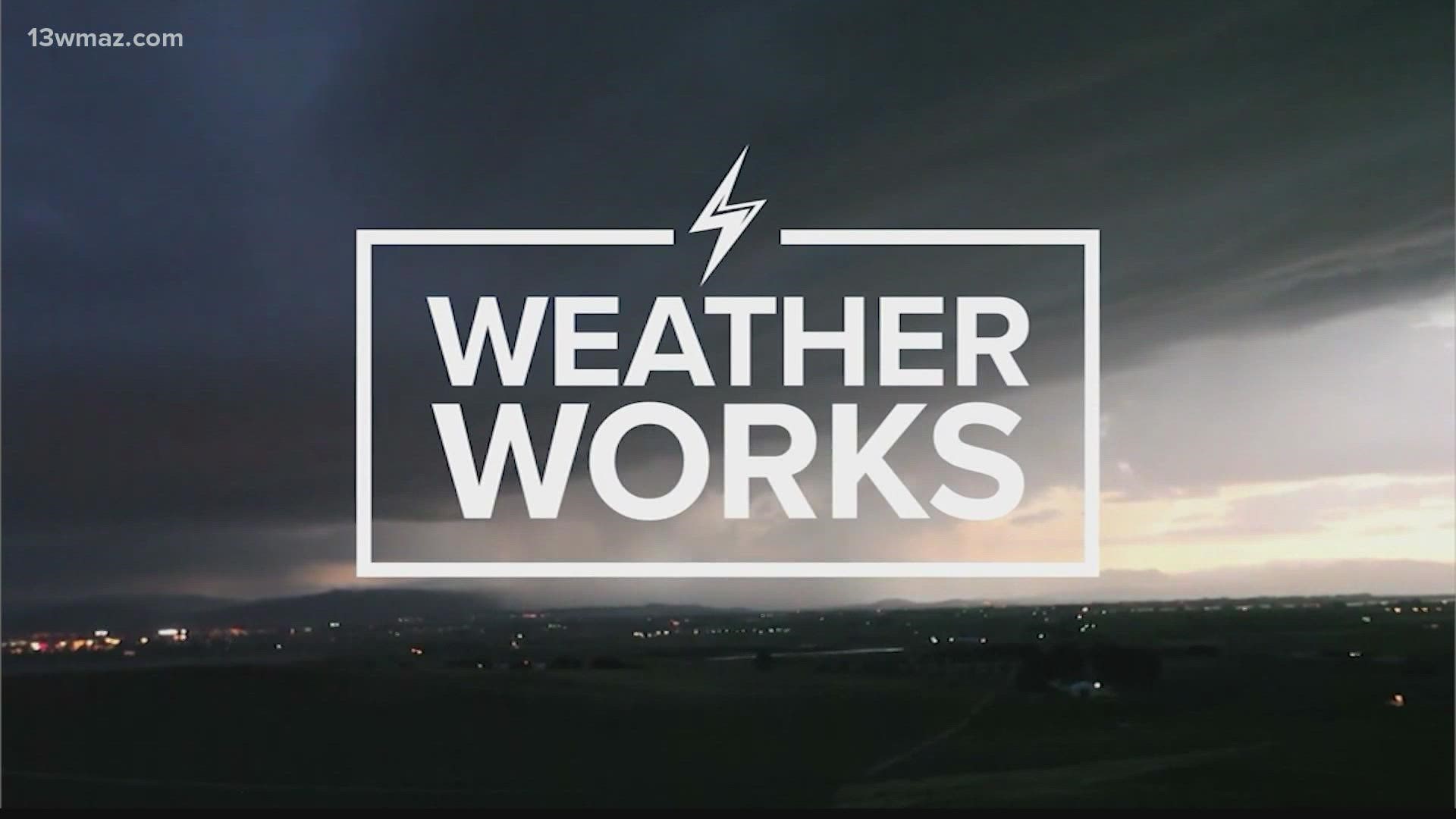MACON, Ga. — Meteorologist Taylor Stephenson dives deeper on how lightning forms in thunderstorms in this episode of Weather Works.
Think of the formation of lightning like playing with magnets. Clouds are made of ice crystals and when those crystals are forced to bump into each other, they release charged particles.
These particles are either positively or negatively charged. The positive charge pushes to the top of the cloud while the negative charge sinks to the bottom.
We get cloud-to-cloud lightning when the negatively charged bottom of the cloud is attracted to the positively charged top. When the two energies connect, it creates that flash of light and booming sound.
The ground on Earth is also charged. Its positive charge is attracted to the negative charge at the bottom of the cloud. The negative charge travels down towards the positively charged Earth to create cloud-to-ground strikes.
When negatively charged particles emit their energy to a positive charge, we call that a negative strike. It is the most common type of lightning.
There are also instances when the positively charged particles from the top of a cloud emit their energy to a negative charge on Earth. These are known as positive strikes and are more dangerous and rare than negative strikes.
That is how lightning within a thunderstorm is formed. Using meteorology and physics, that's how your weather works!

